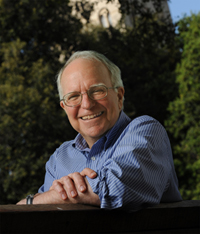The Brookings Institution is committed to quality, independence, and impact.
We are supported by a diverse array of funders. In line with our values and policies, each Brookings publication represents the sole views of its author(s).

Research
BPEA | 1999 No. 2

1999, No. 2
IN THE 1980s, federal income tax policy took center stage in the political
arena. An influential group of “supply-side” economists argued that high
marginal tax rates were severely reducing the incentives of people to work,
and that cutting tax rates, by stimulating people to work harder and earn
more income, could actually raise revenue. This idea is known in popular
parlance as the Laffer curve, after the economist Arthur Laffer, who
(according to rumor) sketched out the idea on a cocktail napkin. In fact,
political debate in the United States over whether cutting rates can raise
revenue dates back many years.